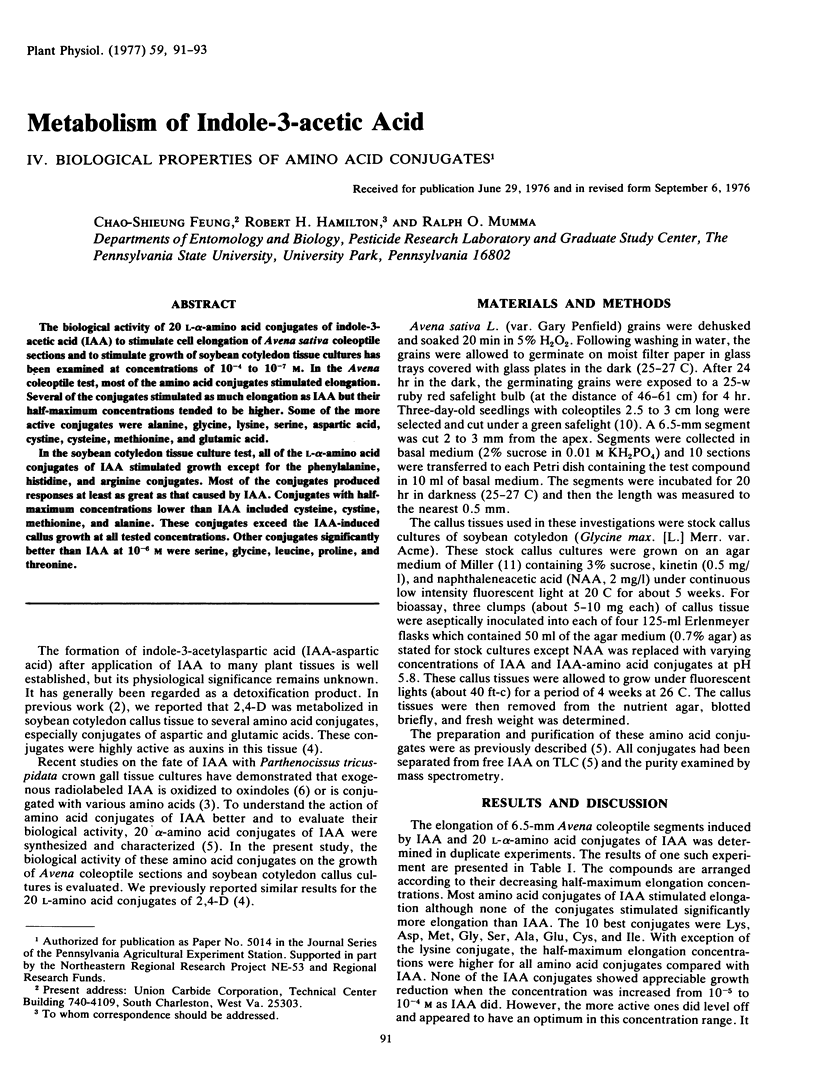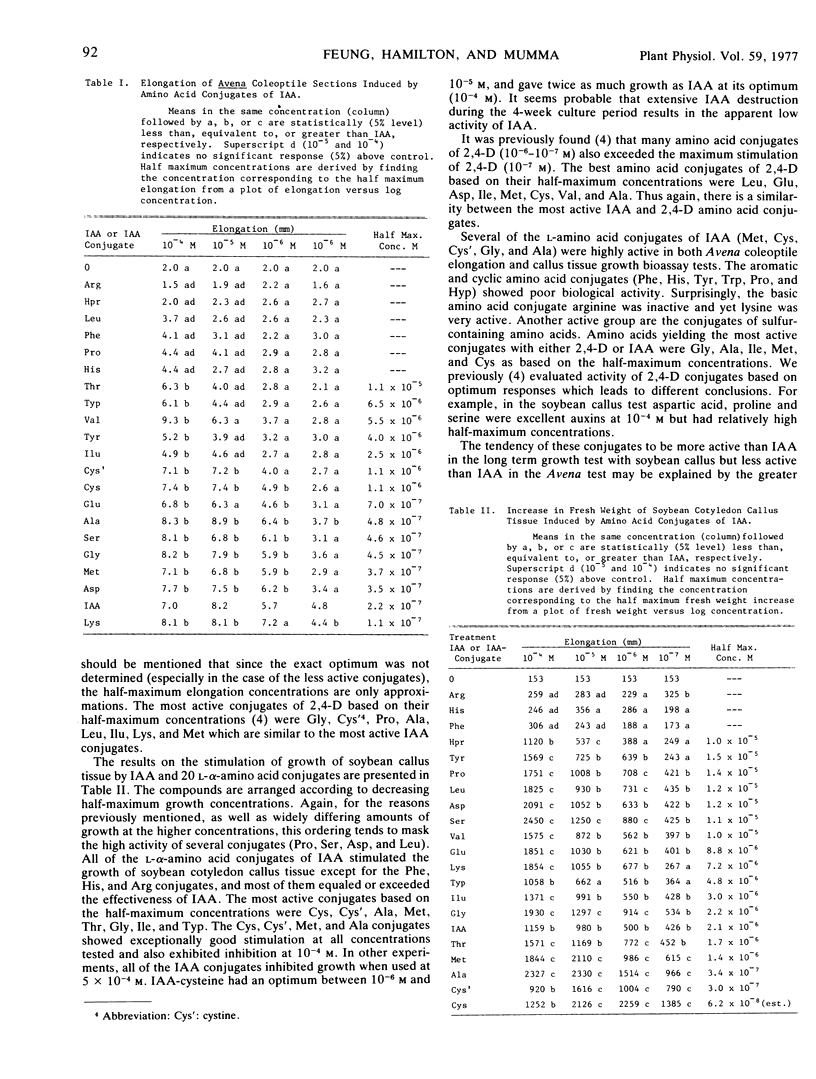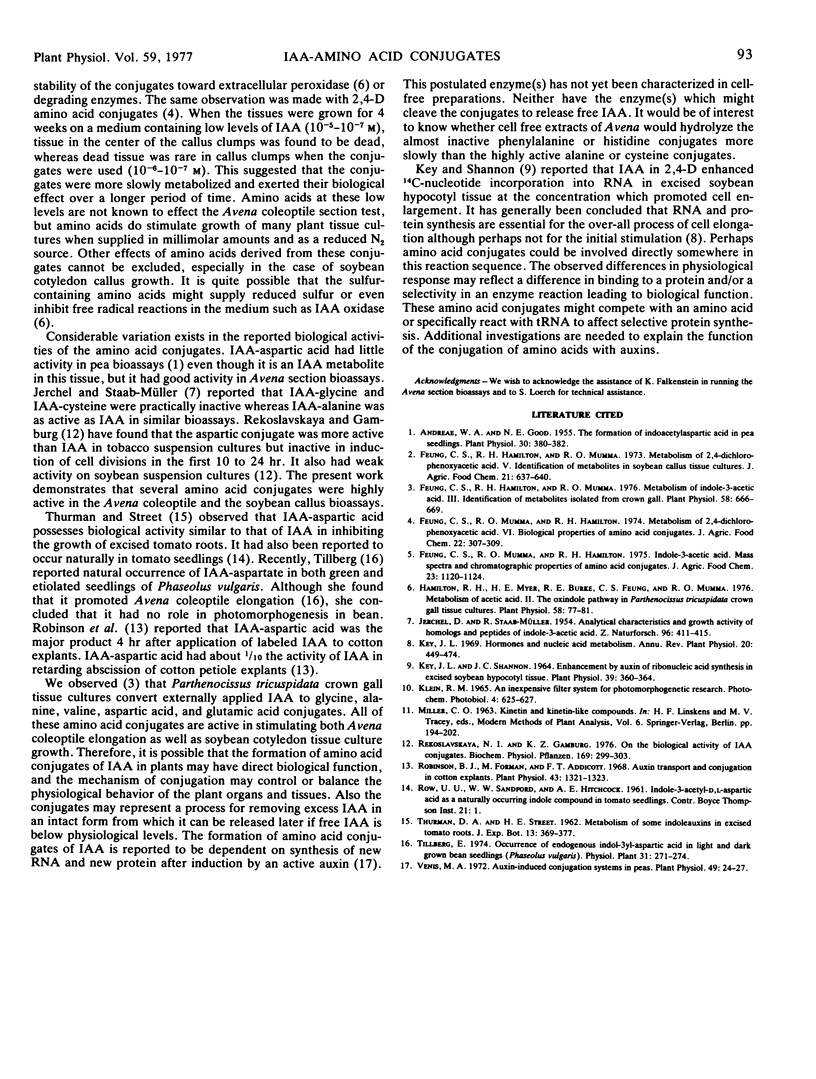Abstract
The biological activity of 20 l-α-amino acid conjugates of indole-3-acetic acid (IAA) to stimulate cell elongation of Avena sativa coleoptile sections and to stimulate growth of soybean cotyledon tissue cultures has been examined at concentrations of 10−4 to 10−7m. In the Avena coleoptile test, most of the amino acid conjugates stimulated elongation. Several of the conjugates stimulated as much elongation as IAA but their half-maximum concentrations tended to be higher. Some of the more active conjugates were alanine, glycine, lysine, serine, aspartic acid, cystine, cysteine, methionine, and glutamic acid.
In the soybean cotyledon tissue culture test, all of the l-α-amino acid conjugates of IAA stimulated growth except for the phenylalanine, histidine, and arginine conjugates. Most of the conjugates produced responses at least as great as that caused by IAA. Conjugates with half-maximum concentrations lower than IAA included cysteine, cystine, methionine, and alanine. These conjugates exceed the IAA-induced callus growth at all tested concentrations. Other conjugates significantly better than IAA at 10−6m were serine, glycine, leucine, proline, and threonine.
Full text
PDF


Selected References
These references are in PubMed. This may not be the complete list of references from this article.
- Andreae W. A., Good N. E. The Formation of Indoleacetylaspartic Acid in Pea Seedlings. Plant Physiol. 1955 Jul;30(4):380–382. doi: 10.1104/pp.30.4.380. [DOI] [PMC free article] [PubMed] [Google Scholar]
- Feung C. S., Hamilton R. H., Mumma R. O. Metabolism of Indole-3-Acetic Acid: III. Identification of Metabolites Isolated from Crown Gall Callus Tissue. Plant Physiol. 1976 Nov;58(5):666–669. doi: 10.1104/pp.58.5.666. [DOI] [PMC free article] [PubMed] [Google Scholar]
- Feung C. S., Mumma R. O., Hamilton R. H. Metabolism of 2,4-dichlorophenoxyacetic acid. VI. Biological properties of amino acid conjugates. J Agric Food Chem. 1974 Mar-Apr;22(2):307–309. doi: 10.1021/jf60192a040. [DOI] [PubMed] [Google Scholar]
- Feung C., Hamilton R. H., Mumma R. O. Metabolism of 2,4-dichlorophenoxyacetic acid. V. Identification of metabolites in soybean callus tissue cultures. J Agric Food Chem. 1973 Jul-Aug;21(4):637–640. doi: 10.1021/jf60188a058. [DOI] [PubMed] [Google Scholar]
- Hamilton R. H., Meyer H. E., Burke R. E., Feung C. S., Mumma R. O. Metabolism of Indole-3-Acetic Acid: II. Oxindole Pathway in Parthenocissus tricuspidata Crown-Gall Tissue Cultures. Plant Physiol. 1976 Jul;58(1):77–81. doi: 10.1104/pp.58.1.77. [DOI] [PMC free article] [PubMed] [Google Scholar]
- Key J. L., Shannon J. C. Enhancement by Auxin of Ribonucleic Acid Synthesis in Excised Soybean Hypocotyl Tissue. Plant Physiol. 1964 May;39(3):360–364. doi: 10.1104/pp.39.3.360. [DOI] [PMC free article] [PubMed] [Google Scholar]


